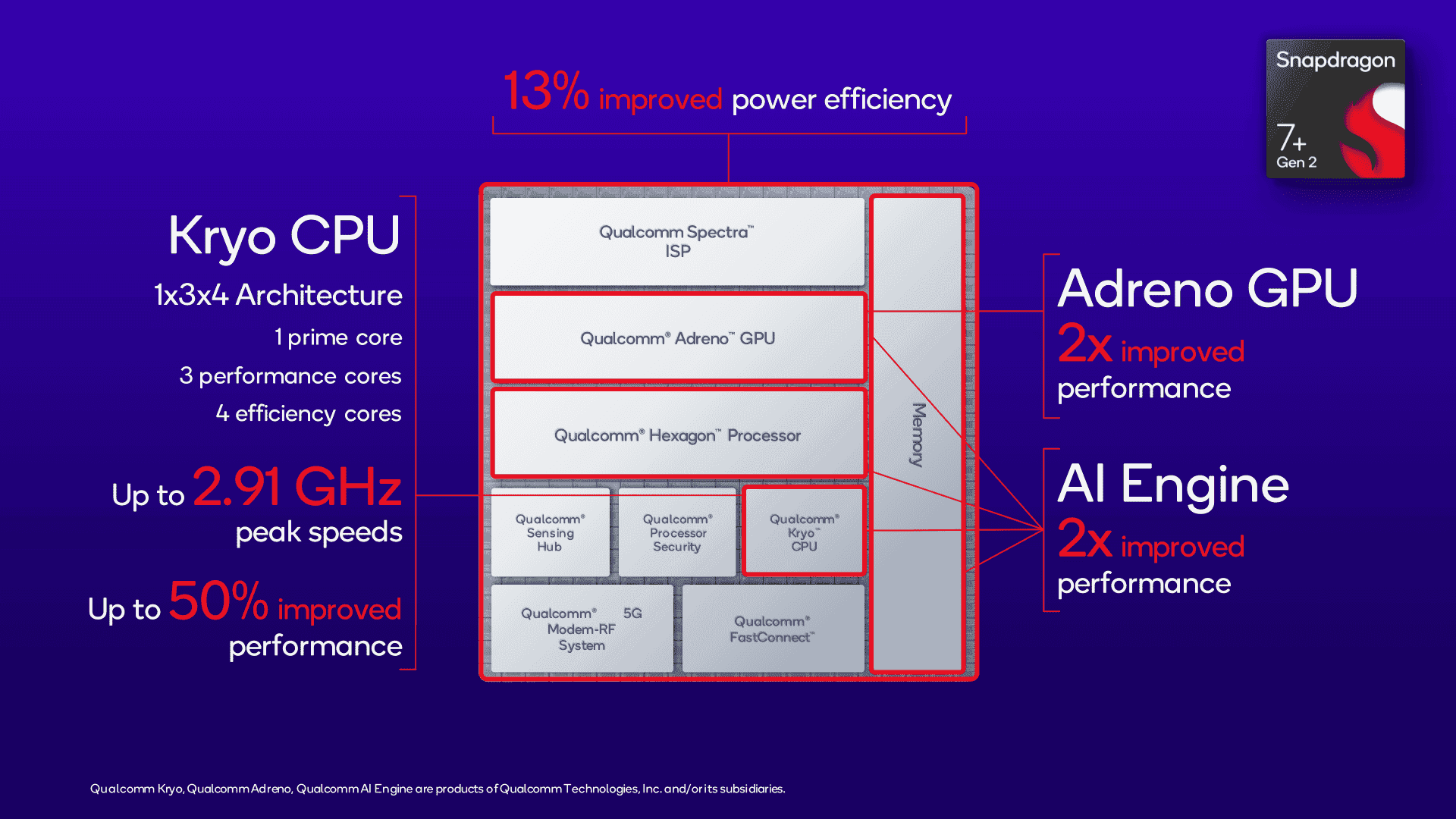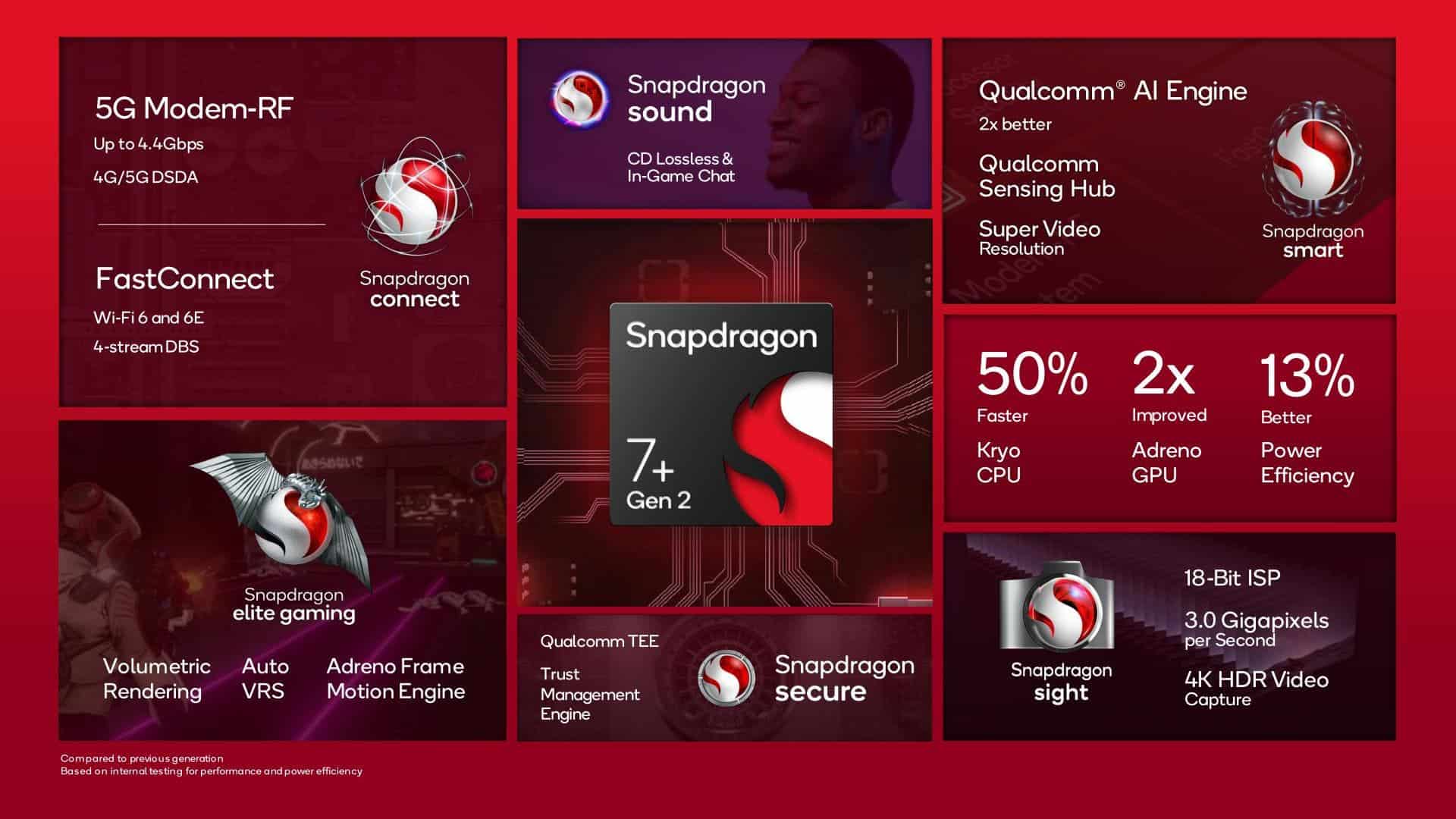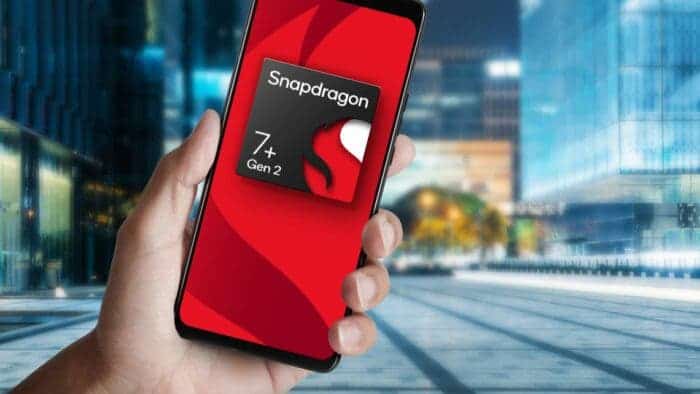Qualcomm has just announced the Snapdragon 7+ Gen 2. It is an upper mid-range chipset that aims to offer powerful, budget-friendly devices. And in case you were wondering, you didn’t miss the 7+ Gen 1 and 7 Gen 2 devices. In fact, Qualcomm jumped straight from 7 Gen 1 to 7+ Gen 2.
Now, even though Qualcomm announced the Snapdragon 7 Gen 1 last year, only a handful of devices took advantage of it. Hopefully, things will not be the same for Snapdragon 7+ Gen 2. But the real question is, how powerful is the SoC, and what can it actually bring to the table?
Closer Look At the Snapdragon 7+ Gen 2
Needless to say, the Snapdragon 8 Gen 2 is the current king of Android SoCs. With it, the Galaxy S23 series and OnePlus 11 are making leaps in the benchmarks. But not everyone requires the level of performance that 8 Gen 2 has to offer. Well, that is exactly where the Snapdragon 7+ Gen 2 steps in.
But what is the “+” there for? According to Qualcomm, a chip with a + in its name does not represent a performance improvement over the previous release. Instead, the + is there to state that the SoC is at the top of its particular series. In other words, many new smartphone buyers are going to have a lot of confusion with Snapdragon chipsets again.

Nonetheless, no matter what Qualcomm says, the Snapdragon 7+ Gen 2 is a big step forward from last year’s model. At least, that is what the specs of the SoC state. It comes with a 1x3x4 architecture, which can ring a bell if you have been keeping your tabs up with recent chipset releases. But if you weren’t, here’s what it stands for:
- 1 “Prime” Cortex-X2 core
- 3 “Performance” Cortex-A710 cores
- 4 “Efficiency” Cortex-A510 cores
Here, the Cortex-X2 core of the Snapdragon 7+ Gen 2 is clocked at 2.91GHz, while the A710s are at 2.49 GHz, and the A510s are at 1.8GHz.
How Does It Compare?
The 1x3x4 architecture of the Snapdragon 7+ Gen 2 is pretty identical to the Snapdragon 8+ Gen 1. That was the mid-gen SoC of last year, and it is still a flagship-grade CPU today. To be exact, the 8+ Gen 1 SoC is currently powering the Galaxy Z Fold 4. And as you might know, that phone is the current foldable flagship of Samsung.
That said, the clock speed of the cores is not exactly a 1:1 match. The main Cortex X2 core of the 8+ Gen 1 could reach speeds up to 3.2GHz. However, it is not like the Snapdragon 7+ Gen 2 is far behind in terms of clock speed.
Furthermore, the Kryo CPU of the Snapdragon 7+ Gen 2 appears to be pretty beefy. They come with 50% improved performance compared to the predecessor. Also, the chipset boasts an Adreno GPU that, according to Qualcomm, is two times faster. The GPU is even capable of Auto Variable Rate Shading, HDR gaming, and Volumetric Rendering.

The 7+ Gen 2 also brings an upgrade to the camera department. It can support up to three cameras with its 18-bit ISP. In comparison, the predecessor maxed out at 14-bit ISP. The latest chipset can also record 4K at 60FPS and can drive QHD+ displays at 120Hz.

Qualcomm has retained the X62 5G modem in the Snapdragon 7+ Gen 2. Thanks to that, the chip has the support for Sub-6 and mmWave but peaks at 4.4Gbps. However, there’s no support for AV1, which is something that is present in the Snapdragon 8 Gen 2. Overall, the chipset is not a perfect clone of the 8+ for mid-rangers. But it is surely powerful enough to make the mid-range devices excel in terms of performance.





